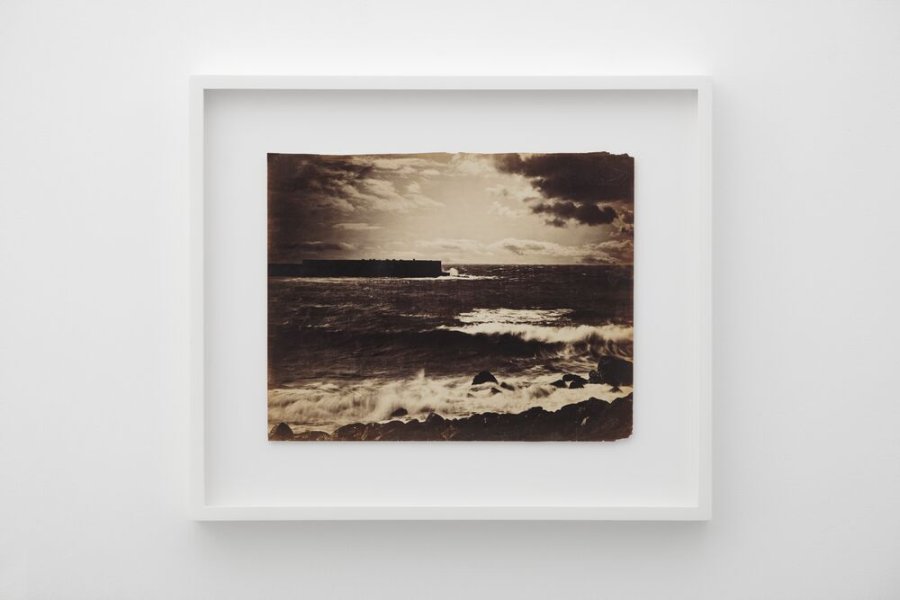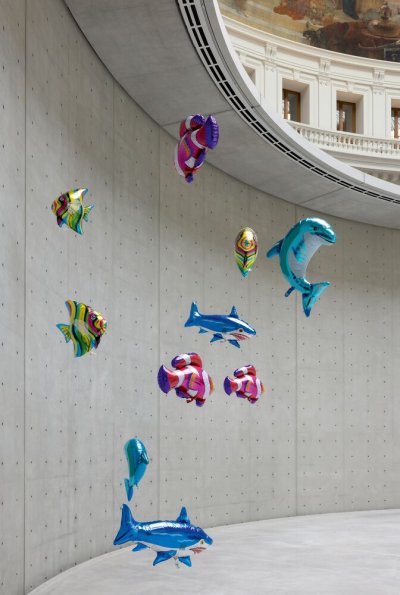Grande vague - Cette
Photograph mounted on card, albumen paper, from a collodion glass plate negative
71.1 x 53.3 cm (28 x 21 in)
This marine photograph taken in 1857 reflects the romantic sensibility of its time and is proof of Gustave Le Gray’s exceptional technical mastery of the fledgling photographic medium, which he uses here to create a composition that is both refined and complex. The very short exposure, by the standards of the time, allows Le Gray to represent the moment in motion, fixing the swell and the surf in sharp focus. This technical feat was made possible by the use of wet collodion plates, developed by Le Gray. It is also a com-posite photograph, having required two shots, one of the sea and the other of the sky, the junction between the two negatives being at the horizon.
The composition owes its dynamism to the oblique lines that run through it and to the expressiveness produced by the chiaroscuro light. The whiteness of the foamy waves alternates with the shaded areas and the pier, darkened by the backlight. The halo produced by the camera lens, in making the centre of the image brighter, allows Le Gray to accentuate the impression of depth. Dark clouds clustered in the upper corners of the image reinforce this effect of atmospheric perspective. Théodore de Banville said of Le Gray that he “is able to capture in an instant the caprices and furies of the elusive sea.”
La Grande Vague paved the way for the portrayal of a moment. It was the first occasion that time had been printed on paper. Something almost cinematic emanates from this masterpiece, an impression of movement. Although immobile, this artwork has nothing fixed about it. All the power of the living issues forth from La Grande Vague.
Matthieu Humery, excerpt from the exhibition catalogue

